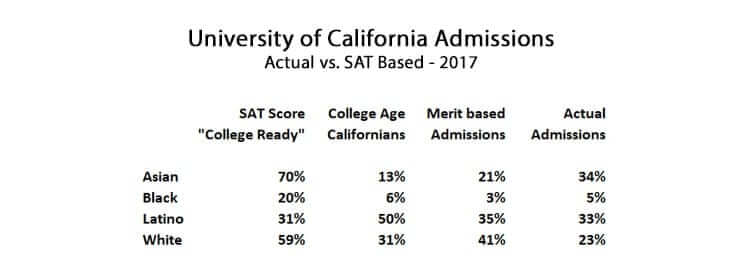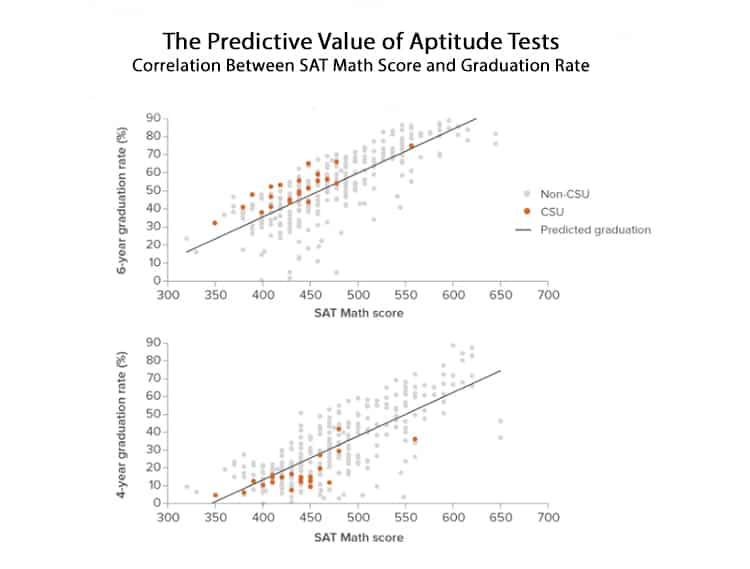Lest anyone be tempted to suggest this essay is written under a pretense of journalistic indifference, let’s make its ideological position clear: Affirmative action, preferential hiring or admissions, or legislatively enforced quotas of any kind—whether based on race, sex, religion, income, or anything else relating to an identifiable “group”—is evil. Affirmative action may masquerade as something good, but that’s an old game, and nobody plays it better than the wicked one.
If policies designed to destroy America’s meritocracy are not stopped, they will destroy everything that makes America great. They will breed cynicism, corruption, and mediocrity; they will sow hatred and resentment; they will encourage indifference to results and discourage hard work; they will misdirect America’s institutional priorities from productivity and innovation to bureaucratic “process” and ideological indoctrination; they will consign America to second class status and ultimately rob it both of prosperity and civil cohesion.
Got that?
With all that in mind, consider the latest assault on competence in America, courtesy of the California State Legislature.
It should come as no surprise that California is the source of the attack since California’s legislature is overwhelmingly dominated by “democratic socialists,” hard-core Marxists, professional race-baiting hustlers, Chicano nationalists, openly and virulently anti-white racists, gender-obsessed crackpots, bought-and-paid-for climate catastrophists, and public-sector union power-mongers. These individuals, most of whom are an “intersectional” composite incorporating many if not all of the just mentioned descriptions, constitute a collective political swill so diabolical that calling them “politicians” is an insult to politicians.
Proposition 16, put onto California’s November 2020 ballot by the state legislature, would amend the California constitution to repeal Proposition 209. The 1996 measure, which passed with strong voter support and surmounted several legal challenges, bars the state from discriminating on the basis of “race, sex, color, ethnicity, or national origin” in public employment, public education, and government contracting.
Imagine that. California has a law that insists on the colorblind treatment of all residents. We can’t have that now, can we? Better fix that right away.
In one of the most deceptive guest columns ever written, recently published by the San Diego Union-Tribune, union marionette and state assemblymember Shirley Weber argues that Proposition 209 actually created racist and sexist outcomes. Here is an example of Weber’s reasoning:
This law [Prop. 209] has allowed discriminatory hiring and contracting processes to flourish in California. The result is that the number of women and Latinos employed by the state of California has decreased significantly relative to population growth. In 1994, Latinos were admitted to the UCs above the average rate, and African-Americans at 6 points below average; in 2019, they were admitted at 6 points and 16 points below average, respectively.
What Weber is actually objecting to, however, is not racism caused by a law outlawing racism. Rather her objection is to allocating opportunities based on competence instead of race.

In this chart, the first column shows what percentage of students taking the SAT, by ethnicity, achieved a score at or above the minimum to be considered “college-ready.” The second column shows the ethnic breakdown of college-age students in California.
Column three, “merit-based admissions,” is the hypothetical kicker: It displays a result calculated from columns one and two. For each ethnicity, the percentage of college-ready students is multiplied by that ethnicity’s portion of the total pool of college-age Californians in order to calculate a crude but significant indicator of what percentage of 2017 college admissions would be offered to students of each ethnicity, if admissions were offered to every applicant who scored “college-ready” or better on their SATs.
Column four shows the actual admissions to California’s UC System in 2017 by ethnicity.
There are a few obvious takeaways from the chart. First, it becomes immediately clear that at 33 percent (column four) of all admissions, Latinos are admitted to the University of California in amounts almost perfectly proportional to their share of college-ready applicants, 35 percent (column three). What proponents of Proposition 16, such as Shirley Weber, want is to raise that share to 50 percent (column two), which would mean Latinos would enter the UC system not based on their ability to do the work, but based on their raw percentage of the total population.
Equally salient is the fact that, if SAT scores were the sole basis for admission, white applicants are clear victims of discrimination. After all, if based on their college readiness as assessed by their SAT performance combined with their percentage of the population, they should have earned 41 percent of the admissions to the UC system (column three). Then why were they only 23 percent of the incoming freshmen class in 2017 (column four)?
But there are other disparities that point to an even bigger problem.
Why, for example, do actual Asian admissions, 34 percent (column four), exceed their merit-based admissions percentage, 21 percent (column three)? Why, for that matter, are the actual Latino admissions, 33 percent (column four), slightly less than the amount they would theoretically earn, 35 percent (column three), based on that same criteria?
The answer in both cases is the same, and can be best summarized in a passage from a 2017 Brookings Institution report:
Race gaps on the SATs are especially pronounced at the tails of the distribution. In a perfectly equal distribution, the racial breakdown of scores at every point in the distribution would mirror the composition of test-takers as whole i.e. 51 percent white, 21 percent Latino, 14 percent black, and 14 percent Asian. But in fact, among top scorers—those scoring between a 750 and 800—60 percent are Asian and 33 percent are white, compared to 5 percent Latino and 2 percent black. Meanwhile, among those scoring between 300 and 350, 37 percent are Latino, 35 percent are black, 21 percent are white, and 6 percent are Asian.
What this means in plain English is that in the UC system, where supposedly only the most elite high school graduates are granted admission, you will find the distribution of the higher SAT scores by ethnicity skewed even more in favor of Asian and white students than you find when evaluating how many students merely achieve the “benchmark” SAT score.
In particular, this is why Asian admissions—which are arguably the only UC admissions in 2017 that were based truly on merit—skew higher than you would otherwise expect. That is also the reason Latino admissions skew somewhat lower. And it also indicates white applicants face even more discrimination than the table shows.
The next chart shows just how significantly math SAT scores differ by ethnic group.

These are not subtle differences. Most striking is the disparity occurring at the extremes of the distribution. It is those whose abilities fall within these gifted extremes who, overwhelmingly, become the inventors and researchers whose breakthroughs ensure American technological preeminence and benefit the world. Note how nearly 15 percent of all Asians were able to score over 750 on their math SAT.
Using math SAT scores as criteria, Asians are underrepresented in the University of California, even though they are overrepresented in proportion to their percentage of the population.
SAT Scores are Predictive of Academic Success
Just to be thorough, lest anyone repeat yet another shibboleth turned fact merely by virtue of repetition, namely, that SAT scores are not predictive of academic success, here is data that proves the value of SAT scores.

In May 2016 the Public Policy Institute of California produced a study that includes data that tracks the correlation between math SAT scores (horizontal axis) and graduation rates (vertical axis). The upper chart depicts six-year graduation rates, the lower chart depicts four-year graduation rates. The orange dots represent results for Cal State campuses, which were the focus of the study. The more numerous grey dots represent similar universities nationwide.
As can be seen, the trend line is unambiguous. It is roughly accurate to state that for every 50-point improvement in a student’s math SAT score, there is a 10 percent greater probability that student will graduate from college. And yet the University of California, in pursuit of social justice, equity, and inclusion, as of May 2020 has abandoned the SAT requirement altogether. This is an astonishing denial of reality.
Will Californians Vote in November to Reinstate Racist Policies?
It is difficult to imagine how affirmative action based purely on proportional representation by race is going to benefit California’s Asian students. If affirmative action is reinstated by California’s voters, and UC admissions are granted in amounts perfectly proportional to the racial composition of California’s college-age students, the following would happen:
Asian enrollment would drop from 34 percent to 13 percent.
Black enrollment would increase from 5 percent to 6 percent.
Latino enrollment would increase from 33 percent to 50 percent.
White enrollment would increase from 23 percent to 31 percent.
Then again, it would be naïve to think “affirmative action” in California would merely mean applying proportional quotas by race in public admissions, hiring, and contracts. It is likely that a social justice hierarchy of disadvantage would become a more relevant criterion than pure ethnic proportionality. And in this manner, the unwarranted and pervasive privilege enjoyed by virtue of whites being white shall justify less than proportional representation.
This theory of how considerations of race can be selectively manipulated to exclude, just for example, whites and Asians from admission in favor of Latinos despite higher SAT scores is consistent with the U.S. Supreme Court’s 2016 ruling in Fisher v. University of Texas. In that case, the court wrote, “The record here reveals that the university articulated concrete and precise goals—e.g., ending stereotypes, promoting ‘cross-racial understanding,’ preparing students for ‘an increasingly diverse workforce and society,’ and cultivating leaders with ‘legitimacy in the eyes of the citizenry’—that mirror the compelling interest this court has approved in prior cases.”
Put another way, absent further clarification from the U.S. Supreme Court, America’s university administrators can come up with a variety of factors, the more diverse the better, that would allow them to manipulate the ethnic composition of their student bodies in whatever proportions they choose. California’s UC Regents, and the legislature that controls them, would be able to do whatever they want. Admission guidelines would be derived from explicitly political motivations and less connected to competence than ever.
There is a good chance that Prop. 16’s flawed attempt at greater “social justice” will be approved by California’s voters. Latinos and Blacks may see no reason to oppose something that would increase the rates of enrollment of their children in the University of California. And white liberals, who dominate California’s diminishing population of white voters, will vote for anything called “affirmative action.”
The Asian vote will be the wild card, but at 15 percent of California’s population, their numbers are still too small to swing an election unless it is close and their vote is monolithic. That is possible but unlikely, because Asians in California still typically vote with Democrats, and California’s Democratic Party is solidly in favor of restoring racism in the name of fighting racism.
There is one great hope, however, and that is if a groundswell of opposition by members of California’s Asian community becomes sufficiently pervasive and persuasive, it will stimulate California’s other voting blocs to express solidarity with them and reject Prop. 16. Should that occur, it will open the door to a broader reevaluation of identity politics and social justice ideology.
By putting Prop. 16 onto the state ballot this November, California’s legislature might, just might, get more than they bargained for. Maybe the good guys will win.
